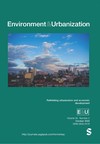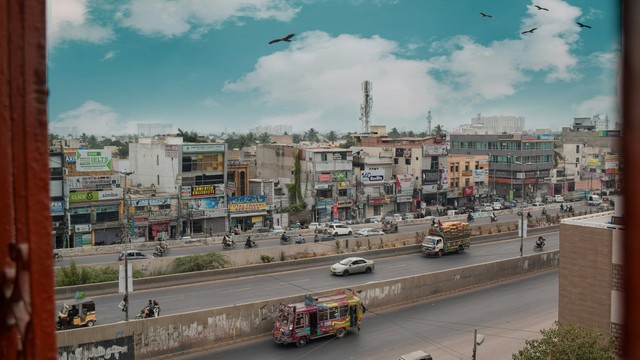Rethinking urbanisation and economic development
With two-thirds of humanity predicted to be living in urban centres by 2050, our guest author looks at the often assumed connection between urbanisation and increased standards of living for city residents. But is this a coincidence? And how should governments act if so?


Luanda, Angola (Photo: Adam Reeder, via Flickr, CC BY-NC 2.0)
The relationship between urbanisation and development is one of the mysteries of our time. History reveals a strong correlation between a country’s level of urbanisation and the average incomes of working people.
This is important, but it doesn’t mean that urbanisation is the main reason for rising incomes. There could be other explanations, like structural economic change or the presence of more effective institutions.
So the connection between urbanisation and living standards could be more of a coincidence than a cause. What’s more, we can’t simply assume that this connection still exists, and will exist in the future.
Pathways to prosperity?
What we do know is that over the next few decades virtually all the world’s population growth will occur in urban centres. Most of this will happen in Asia and Africa, which is why it’s crucial to anticipate whether or not people will be better or worse off. And why it’s vital for governments to act in ways that enable cities to create pathways to prosperity.
Yet, understanding and acting upon the urbanisation-development relationship is challenging. It requires research, knowledge and practical capabilities that bridge multiple academic disciplines, stakeholders and policy silos. Achieving this kind of coordination requires great foresight and leadership.
Meanwhile, recent events have revealed some of the risks of rapid urbanisation. COVID-19 showed the devastating effect of disease spreading among dense concentrations of people in unplanned settlements with no services. Supply chain disruptions pushed up food prices which aggravated hunger, hardship and social unrest among poor urban communities.
More frequent typhoons, flooding and droughts have also exposed cities with weak infrastructure to the consequences of accelerating climate change.
These cataclysmic events have happened within a few years of global agreements focused on urbanisation – which recognised both the vulnerabilities of rapid urban growth and the opportunities presented. The UN’s Sustainable Development Goal 11 underlined the links between the economic, social and environmental challenges facing cities, and stressed the need for integrated, place-based solutions that spur socio-economic progress and leave no-one behind.
Why does urbanisation foster development?
The most convincing reason stems from the concept of ‘agglomeration economies’ where people and firms located in physical proximity interact more efficiently than in dispersed settings – making them more productive. They trade with each other, compete, exchange information and share logistics. Bigger cities enable more interactions and the faster spread of new ideas and techniques.
Larger cities also encourage people and firms to specialise in particular skills, tasks and functions, leading to better and cheaper products and services. Their higher productivity attracts investment, fosters enterprise, fuels growth and creates jobs. The return on public investment in cities is higher than elsewhere because of economies of scale and lower transport costs in delivering services to large, dense settlements. The outcome should be a virtuous cycle of economic dynamism, higher incomes and better social infrastructure.
Yet these positive effects are offset by rising congestion, overcrowding and higher costs of land and housing. This marginalises low-income groups and aggravates unequal access to jobs and amenities.
Urban expansion also means more pollution, environmental degradation and loss of agricultural land. Without investment in infrastructure and urban planning, the negative effects of city growth can outweigh the positives and undermine economic dynamism and development.
The experience of advanced economies
Most of the evidence for agglomeration is from the advanced economies of the global North. Their urban-rural transition was in the 19th century and coincided with Europe’s industrial revolution. Favourable circumstances created a strong connection between urbanisation and rising living standards.
Manufacturing was the catalyst and benefited from cheap raw material from former colonies and restricted foreign competition. It was labour intensive and absorbed uneducated workers moving to cities. Natural population growth was constrained by high mortality and disease (which led to increased wages and improved workplaces by moderating the supply of labour). Advances in agriculture fed the urban population and pushed farmworkers into cities, reinforcing the shift to manufacturing.
There are parallels with selected emerging economies – namely post-World War II Japan, South Korea, Taiwan and China. Industrialisation drove productivity growth and rising prosperity. Urbanisation fuelled the supply of cheap, flexible labour and created many of the world’s largest cities, such as Tokyo, Seoul and Shanghai. The symbiotic forces of agglomeration and business specialisation yielded advances in technology, better products, higher-skilled jobs and improved living conditions.
Massive public investments in urban infrastructure were another ingredient in building productive cities. Some of the finance came from capable local governments, which had captured the uplift in land values from converting farmland to urban uses, and prevented windfalls to private developers and speculators.
Challenges facing cities in the global South
The context for the global South has become more difficult and the barriers to success are higher. Countries struggle to diversify from exporting basic commodities. New technology means that manufacturing doesn’t create as many jobs. China’s industrial success has intensified global competition and restricted opportunities for other producers. Neighbouring Vietnam and Cambodia have benefited from rising Chinese labour costs more than distant regions. And growing economic protectionism in the global North complicates matters further.
The other side of the urbanisation/development equation – population growth – has been unleashed by improvements in health, medicine and sanitation. Child mortality has fallen steeply and people live longer. So Africa and Asia’s urban populations are burgeoning, making it harder to find jobs and decent housing. Meanwhile, countries battle to boost agricultural output, which means rural poverty and out-migration.
The apparent unravelling of the connection between urbanisation and development in the global South makes it imperative to explore the dynamics more carefully. The achievements of fortunate Northern cities need closer investigation to explain precisely how urbanisation enabled structural transformation and prosperity.
More importantly, the experiences of low- and middle-income countries in Africa and Asia need intensive examination to understand what is either helping or hindering urbanisation from playing a constructive role in development. This demands a major effort to redress the current chasm between urban research in the North and the South.
An agenda for analysis
Five dimensions of the urbanisation-development connection require further analysis:
- A more granular understanding of agglomeration dynamics is important, including the scope and limits of where and when they apply. We need to move beyond general propositions and aggregate analytical methods to more nuanced insights and grounded analysis. We also need to distinguish between different kinds of urban industries, enterprises, infrastructures and institutions.
- Key features of the wider economic environment need to be better understood. One aspect is the opportunity for cities to develop tradable goods and services by inserting themselves into regional and global value chains. Another is the potential for new digital technologies to benefit service-sector enterprises in emerging cities.
- The population trajectories of Southern cities require further research. What would it take to capitalise on the demographic dividend from their youthful populations? Does it make a difference if urbanisation stems from the growth of existing cities, or from the consolidation of rural settlements to form new towns and cities?
- The relationship between the built environment and economic performance – what impact does informal housing and customary property regimes have on business productivity, bank lending and investment in the real economy?
- Various features of urban governance affect how urbanisation evolves, including the capabilities of formal institutions and other stakeholders to prepare the ground for human settlement, to invest in essential infrastructure, to capture the uplift in land values through property taxes, and to adopt realistic norms and standards in regulating economic activity.
The papers in a recent special issue of Environment and Urbanization seek to advance knowledge on many of these issues.




